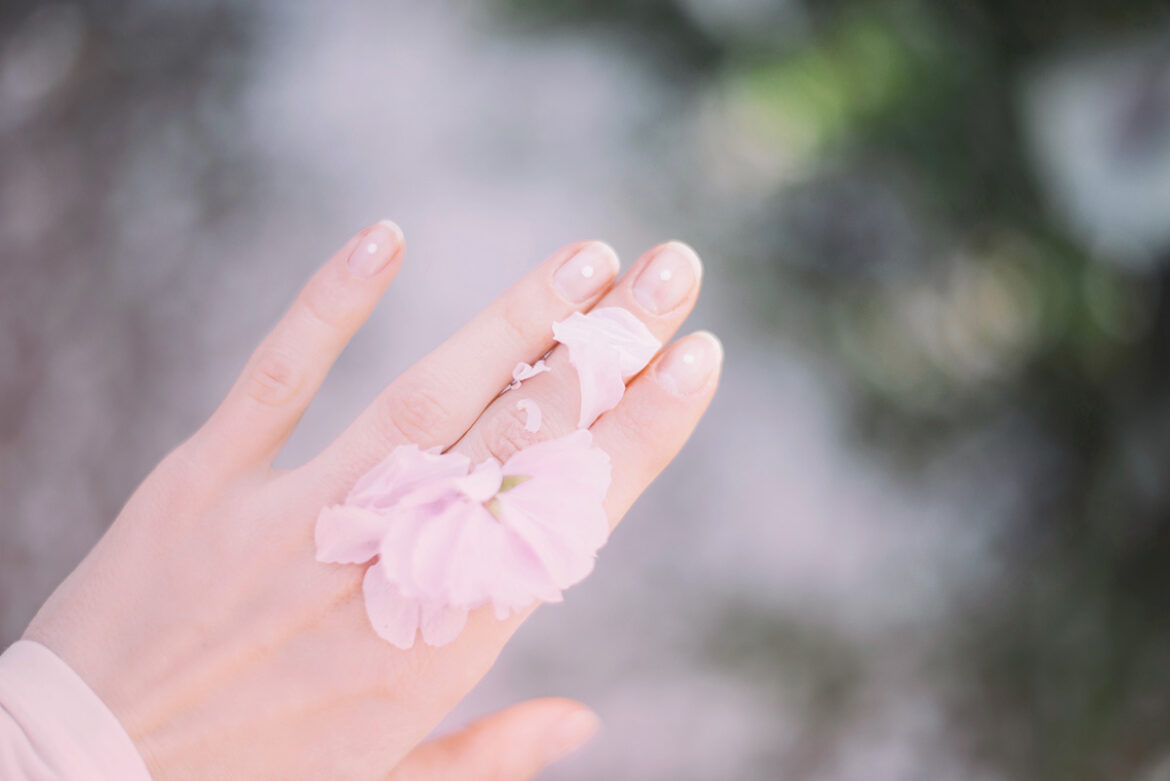Many people have a tremor or shaky hands. No matter what the cause, you can still paint a beautiful picture and enjoy your creativity. All it takes is a few adjustments to your technique, and good preparation.
When you consider how many things cause a tremor, it is not surprising that it is such a common and frustrating symptom.
Some Causes of Tremor
- Parkinson’s and other brain disorders
- Essential Tremor
- Age-related tremor
- Alcohol or caffeine over-consumption
- Mental illness, anxiety or stress
- Drug side effect
- Tiredness / poor sleep habits
- Over-active thyroid
- Low blood sugar
- Dehydration
Choosing art therapy or just painting because you love it is an option still on the table for you. I can write on this topic with genuine authority because I have a familial tremor.
Essential Tremor is a familial neurological disease which progresses very slowly over the years. I first noticed mine as a child and then more so as a teenager.
You’ve seen my artwork and there is a lot of fine detail in it. You must be wondering how I did it! It is all in the strategies and tricks which I will tell you about.
I know that as the tremor gets worse I will have to adapt my painting style, but luckily there are many options available to try.
But here’s a thought:
Interestingly when you use the part of your brain to paint, it is similar to meditating! When I am fully immersed in painting, my tremor is significantly reduced.

Reduce The Tremor
The first question is: how bad is the tremor? Fine to medium tremors can be reduced by a number of factors:
- Tiredness: have you got poor sleep habits? Do whatever you can to improve this aspect because tiredness is a general exacerbator of a tremor.
- Music: play something that helps you feel calm.
- Remove stressors that fill your body with anxiety. (painting can actually work as a treatment plan for that)
- Regular meditation (known to substantially improve brain function and increase your ability to be calm.
- Exercise: going for a regular walk or anything you like, improves oxygenation to your brain and that has a flow-on effect to your whole body.
- Don’t eat rubbish food. Too much sugar and high carbohydrates can leave you shaky with the big swings in blood sugar levels.
- Make sure you have eaten before you start painting.
- Stay well hydrated, keep a bottle of water near-by.
- Drink calming teas: try chamomile, lemon-balm, mallow and tea mixtures with names like ‘relax’, ‘sleepytime’ or similar.
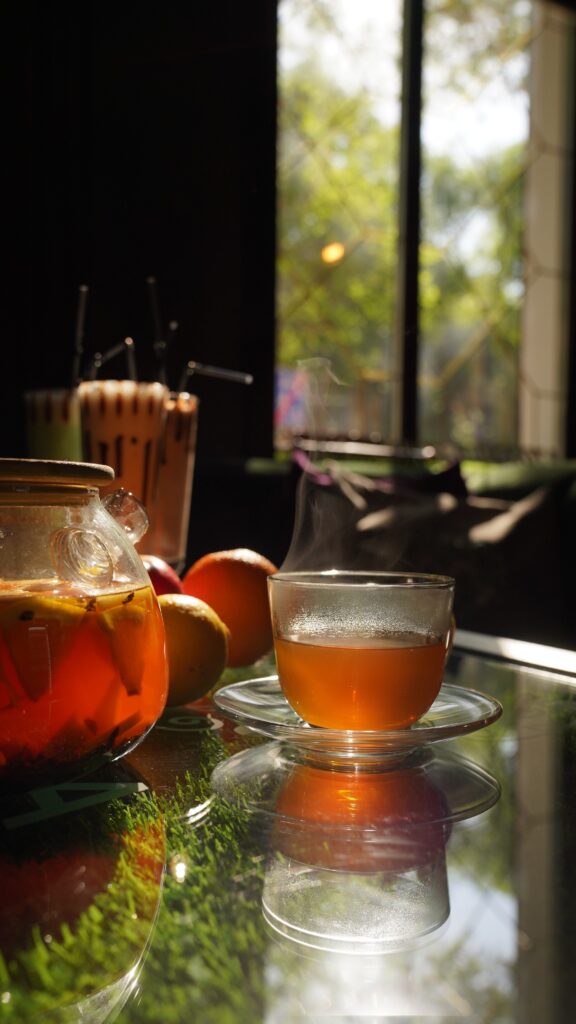
Painting Techniques To Help Off-set The Tremor Issue
Acceptance that you have a tremor goes a long way in helping you deal with this problem. You stop fighting it and can take active measures to live the life you want in spite of it.
If you want to paint, you can. I paint fine work despite a mild tremor by doing most things in the list above. Then I use other tricks when I am painting.
Some days the tremor is worse than others. Painting first thing in the morning when I have the most energy often helps. Going to bed at a decent hour the night before makes a huge difference.

If I am really tired, I don’t even try painting. You want it to be an enjoyable experience.
Fine work can be greatly assisted by using a leaning rod. I bought a piece of dowel from the art store and cut it to the size I wanted with a knife. You don’t need a saw.
You can also buy a metal, telescopic pole with a small rubber tip. Tremors are so common that this is a tool you can buy in any good art store.
You lean the top of the rod or dowel on the top of the canvas, rest your hand on it and then paint. Any marks on the edge can be fixed at the end.
Painting with acrylics is easier than oils when you have a tremor. That’s because acrylic paint dries quickly and you can use your pinky to lean on a previously painted area without smudging it.
Don’t bother doing that with oil paintings, I had little pinky smudges everywhere when I first started.
It is a nuisance, and some people have such a bad tremor that they can barely eat or drink. There are several medication options available that you can talk to your GP about if it is really bad.
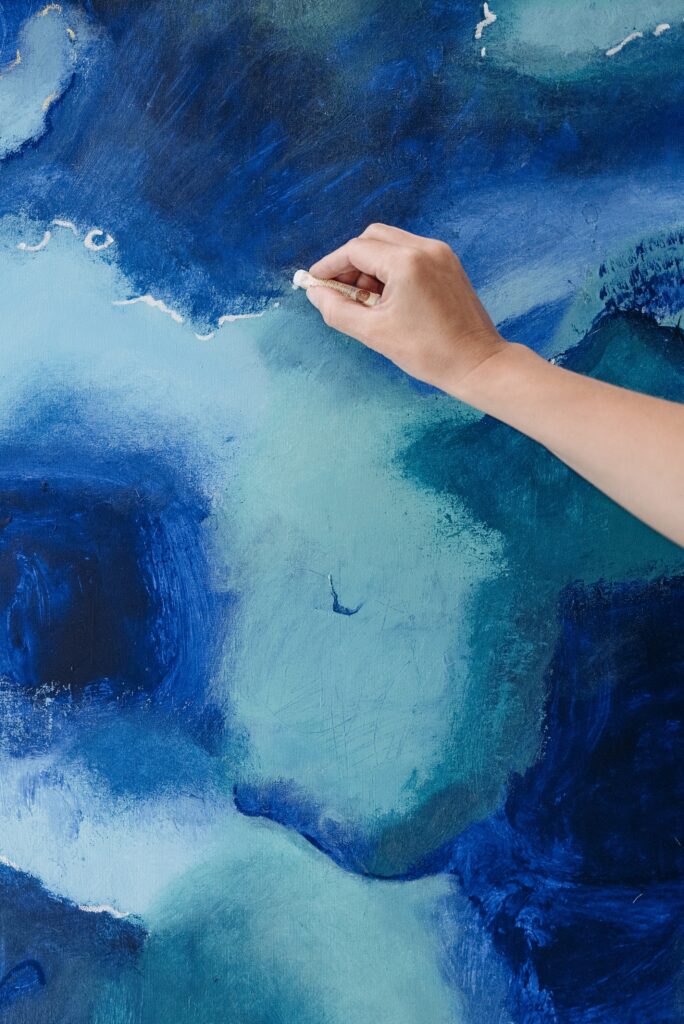
Practical Suggestions For Painting With A Tremor
- Be prepared for messes and mistakes, it doesn’t matter! Have plenty of paper towels ready, a bin, and clean up options.
- Wear a protective apron and invest in some good drop sheets.
- Have a rest after an hour. Walk away, close your eyes, have a bite to eat and a cup of tea.
- Alternate between paintings. Have more than one on the go so you can choose easier work when you’re a bit tired.
- Buy a good easel which goes up and down as you wish. Head and neck tremors will benefit from this.
- Stretch now and then. Trying to control your tremor can cause the muscles to tighten and give you a headache or discomfort later.
- If you have trouble with a pencil, ask someone else to transfer the initial image for you first. (It is far easier to paint with a big brush than draw with a fine pencil)
- Use storage options which are easy to access.
Creative Freedom
Painting and art itself are one of those wonderful areas of creative freedom. So give yourself the freedom and choice to paint however you want.
Acceptance of the tremor will also help you accept that you have to adapt. Choose a medium and style that works with it, not against it.
Impasto is a great choice as you can do this style with next to no fine detailed work if you want. You can also paint using just a palette knife and not even pick up a brush.
The paint is laid on nice and thick, with a single splat or squelch of your palette knife right into place. You can make some amazing works of art using the impasto style.
Pouring paint is something else you might like to try. Abstract art in all it’s interesting applications is available to you. But if you prefer something more realistic, use thicker brushes.
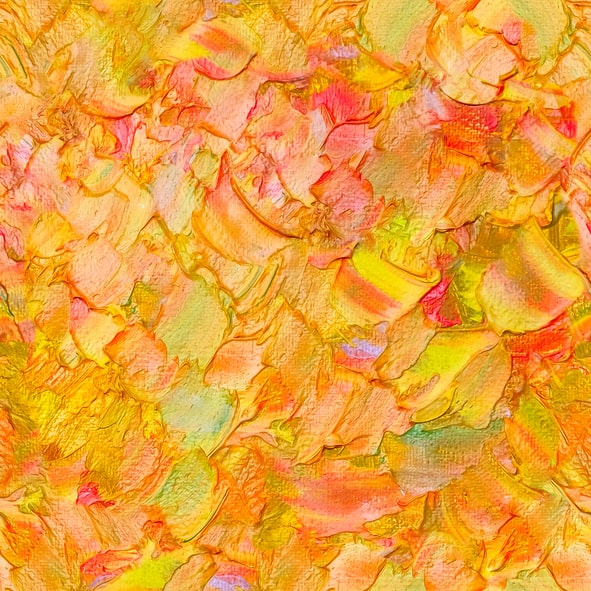
Allow The Tremor To Guide Your Style
Let your style be more of a ‘suggestion’ of what you can see. Practice focussing on the light and shadow of your subject. Look at the broad shapes and that is what you paint.
Many people love this style and prefer it to something more realistic. Your individuality is definitely apparent in this style of art, where-as it could be said that a photo-realistic image could have been done by anyone with that talent.
Individual style is more likely to be found when you experiment within the constraints of your tremor, by being brave about putting paint onto the canvas.
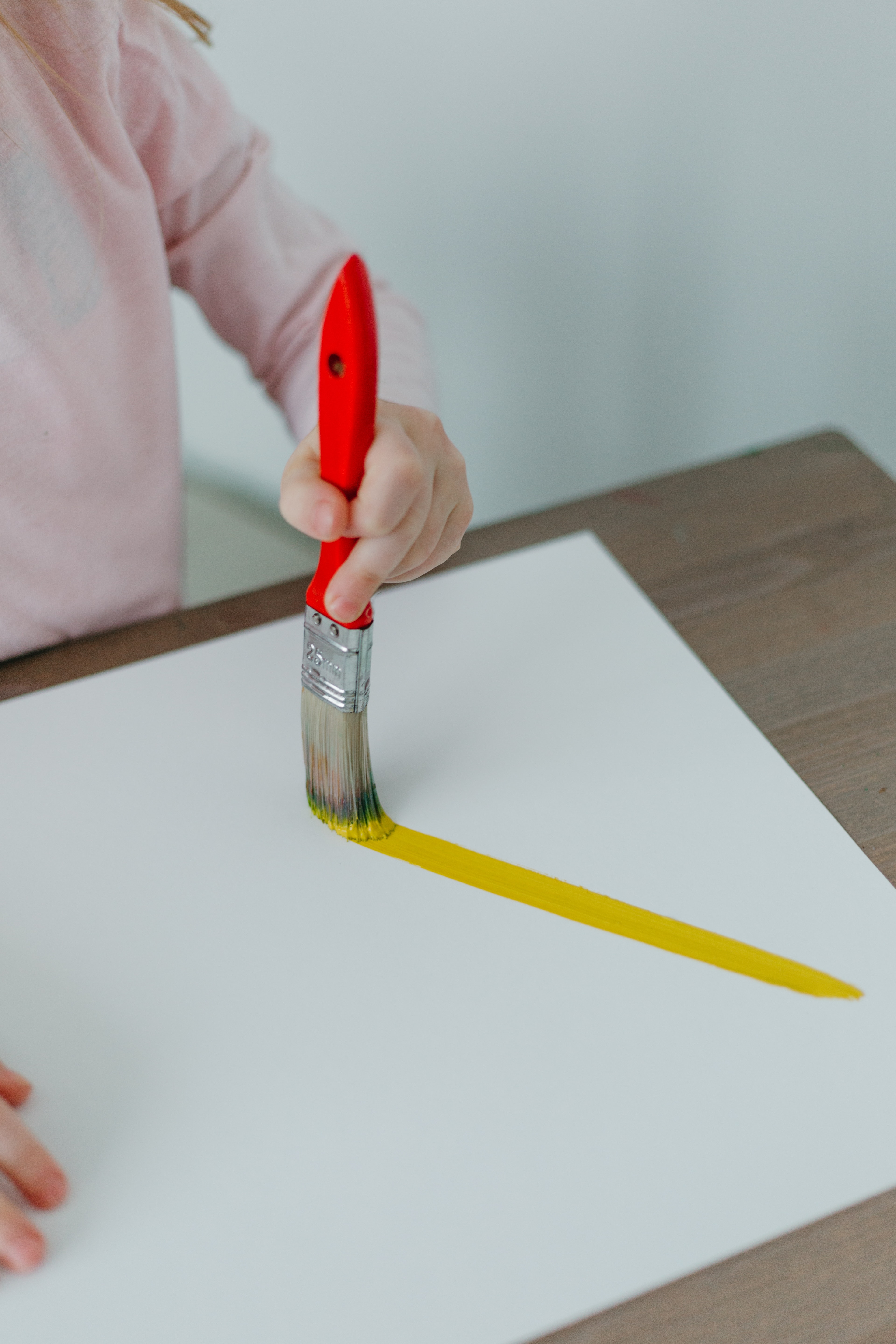
Use your tremor to advantage: let the tremor create special effects!
The most famous artists are famous and successful because they have a recognizable individual style.
I am always amazed when I see paintings done by foot and mouth artists. No matter what your obstacle is, ask yourself what is stopping you from trying something different.
Keep on painting and don’t let a bit of shakiness get in the way of creativity.

